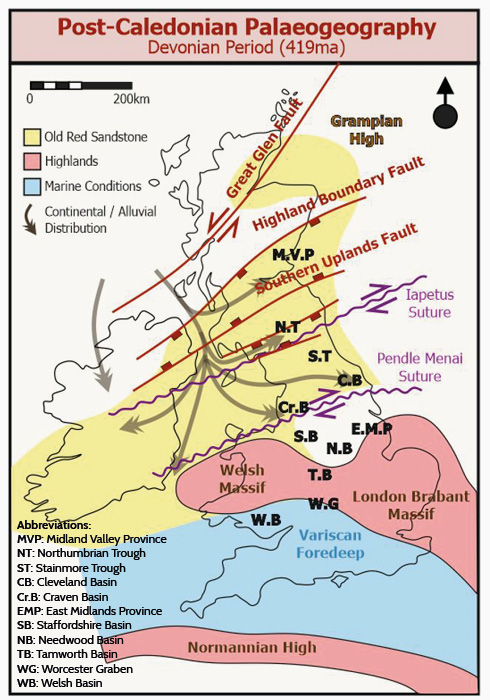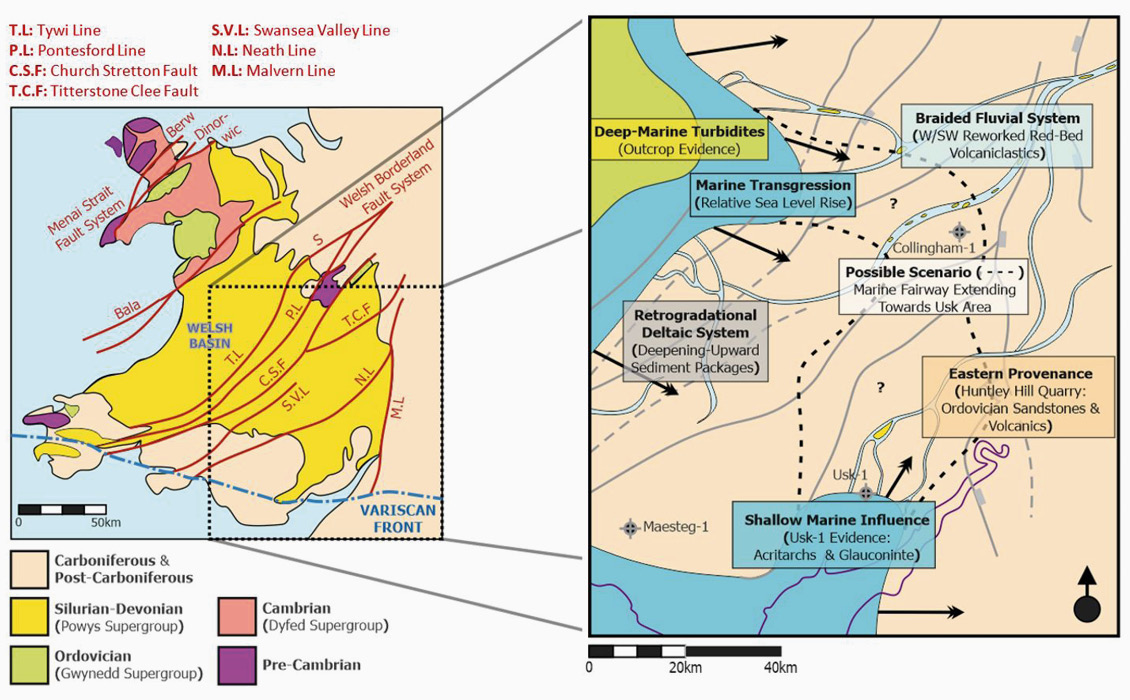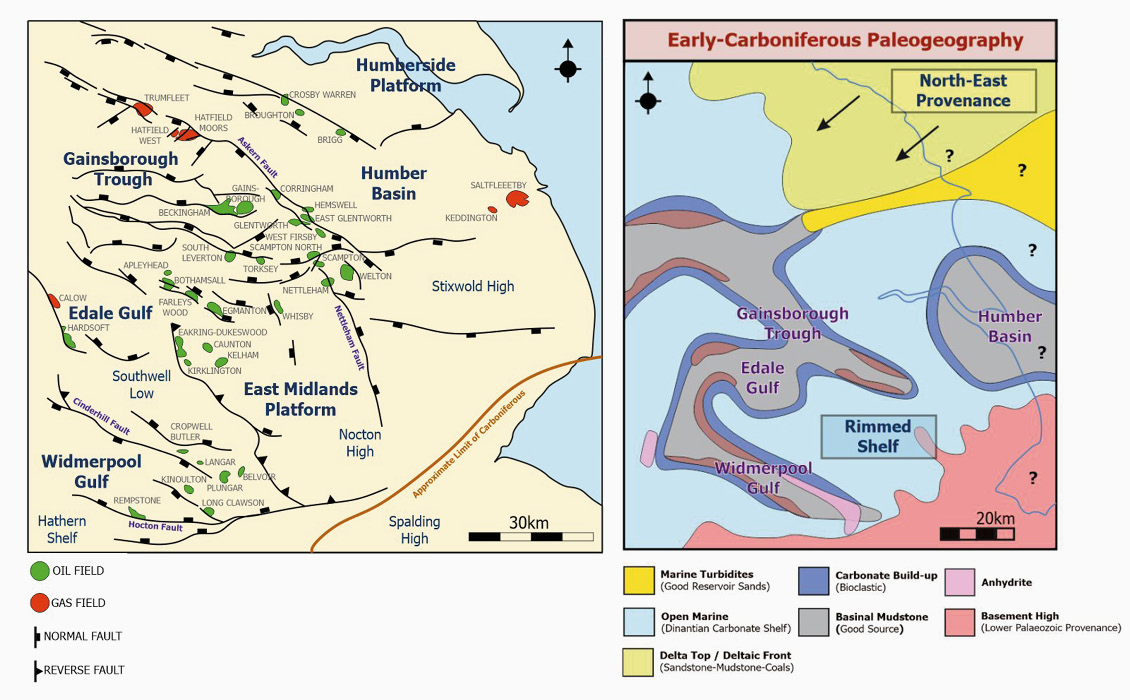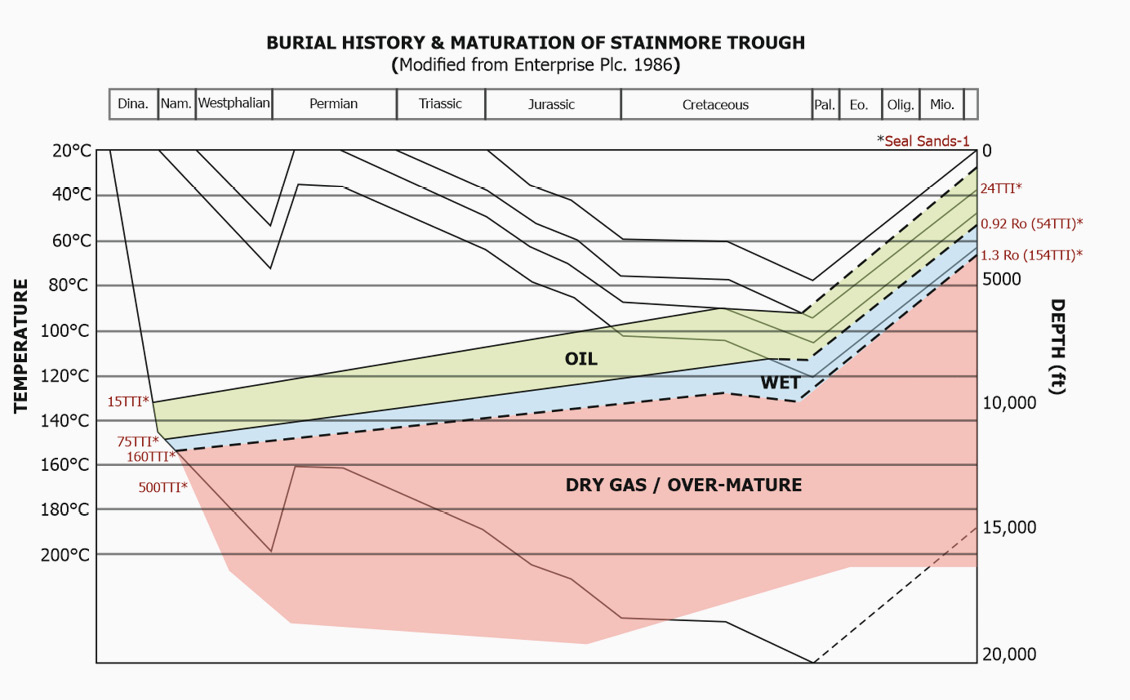A Rich History
In 1851, wide seams of organic-rich shales were discovered in West Lothian. As an innovative chemist, James Young discovered how to distil oil from shale. This fired up the industrial revolution and launched the UK oil and gas industry. By 1913, Scottish oil peaked at 6,000 bopd. Demand doubled during WWI, and the government introduced the Petroleum Act of 1918. Funded exploration for conventional hydrocarbons led to discoveries in the Midland Valley of Scotland and on the anticlinal flanks of the Derbyshire Dome.
G.M. Lees, head of exploration for the Anglo-Persian Oil Company, recommended the Petroleum Act of 1934 ‘under geological reasoning’, and the UK onshore oil and gas industry was nationalised. At the start of WWII, D’Arcy Exploration noted minor oil accumulations within Pleistocene clays along the Lancashire Coast and the Formby Oilfield was discovered. This was soon over-shadowed by discoveries in the East Midlands, where petroleum shows within concealed coalfields in and around the Ollerton Anticline led to the discovery of the Eakring Field.
The East Midlands Province was vital for the UK during WWII, and production of hydrocarbon-bearing Carboniferous interbeds and Permian limestones continues to present day. With over 30 commercially viable fields identified, the province contains the UK’s largest onshore gasfield (Saltfleetby) and second-largest oilfield (Welton).
After the war, technological advances in seismic revolutionised onshore exploration. Twenty-five deep-seated discoveries across Nottinghamshire, Yorkshire, Lancashire, and Scotland accounted for 3,000 bopd. In 1959, the UK produced 80,000 tonnes of oil from the East Midlands Province alone. The UK Continental Shelf Act of 1964 saw a boom in offshore exploration, and with tough competition from Middle Eastern imports, onshore exploration was deemed less favourable. Despite this, large Mesozoic systems were discovered in Dorset, and the Wytch Farm oil field, discovered in 1973 soon became Europe’s largest onshore field.
The first official onshore licensing round was held in 1985 and with an increase in UK onshore exploration and production, legislation was later revised into the Petroleum Act of 1998. By 2013, 1,800 wells had been drilled; 300 operating wells across 120 sites produced more than 20,000-barrels of oil equivalent per day.
To date, 14 onshore licensing rounds have taken place, the last in 2014 and the decision to devolve onshore licensing authority to the Scottish and Welsh ministers was made in 2018, but the 15th UK onshore licensing round is yet to be held.
Geological History and Prospectivity
For over 490 Ma, the UK has been subjected to intense deformation, sedimentation, and re-configuration. Where technical risks commonly outweigh economic viability, a thorough understanding of conceptual geology is critical.
490 to 390 Ma, the ‘Caledonian Orogeny’ was the first mountain-building event of the UK Palaeozoic. Uplifted highlands sourced Devonian-aged ‘Old Red Sandstone’, packages of alluvial sand and axial rift channel reservoirs. These hot-desert-like sediments are intercalated with playa lake muds and evaporites, deposited within the subsiding depocentres of ancient continental half-grabens, such as the Midland Valley of Scotland.
Hurricane Energy (2008, 2011) was the first oil and gas company to investigate the Strathmore Basin, Scotland. Devonian outcrops represent a series of mappable petroleum elements in the Old Red Sandstone. Regional satellite imagery and 2D seismic signalled that complex, fault-bounded traps were likely preserved and associated with the Tay Graben. Unfortunately, local noise and concerns for water supplies resulted in a low-resolution survey. Despite this, Hurricane stated: “The Strathmore Basin does support a valid Devonian play”, and further exploration is recommended.
In the Lower-Palaeozoic, marine deposits become more prominent in the Variscan foredeep, south of the Welsh Massif and Midlands Micro-craton. Deep-sea organics are thought to underlie Silurian to Devonian-aged turbidites, shoreline sands, and fluvial channel reservoirs.
The Welsh Basin is commonly little explored, but Sovereign & Amerada Hess (1985) investigated the Woolhope and Usk anticlines along the Welsh Basin Shelf, but without success. Since then, coal bed methane has been the preferred objective. Coastal Oil & Gas (2016) hinted at the presence of natural gas within traps like those described by UK Methane (2004); however, most source rocks matured early in their geological history. Being on the forefront of the Variscan Orogeny, discoveries are likely to be degraded relics of heavily redistributed systems.
At the onset of the Carboniferous, wrench-style tectonism developed a series of sub-basins across the UK. Many were characterised by platform Carbonates such as the Derbyshire Dome, but those in the Midland Valley were largely siliclastic. Drowned basins are represented by deep-sea organics, such as the Bowland Shale and Millstone Grit. During episodes of reduced tectonism, southwestward prograding deltas filled basinal lows with lagoonal oil shales, fluvial channel sandstones, and swampland coals; some of which are strongly tied to the onshore oil and gas industry.
The end-Carboniferous ‘Variscan Orogeny’ was the second major mountain-building event of the UK Palaeozoic. Pre-existing faults were re-activated by compressional tectonics, and anticlinal traps formed. The Carboniferous-aged Craven Basin underpins proven Permo-Triassic systems such as the Cheshire Basin and West Lancashire Plain. Tilted fault blocks and Variscan anticlines are capped by end-Palaeozoic evaporites, and are thought to trap siliclastic reservoirs (British Gas & BP 1991). The Northwest Water Authority (1986) also noted prospectivity in Palaeozoic dolomites. EDP Group (2008) later conducted deep-seated exploration in this commonly overlooked basin. The Bowland Shale is regionally present across the Midlands.
The Staffordshire Basin, a system local to the Nooks Farm gas field, is thought to source many discoveries as far back as 1929, where 750 bbl were reportedly encountered from a borehole in Kingsbury Colliery, Tamworth Basin. West Midland sediments are thin and associated with risky stratigraphic traps. The Needwood Basin is an under-explored system, which neighbours the productive Widmerpool Gulf to the east. Geochemical studies by Clyde Petroleum and Phillips (1987) revealed mature source rocks underlying delta sands. Traps may exist as stratigraphic pinch-outs and tilted-fault-blocks, but prospects cannot be defined until further exploration is conducted with modern techniques and improved seismic coverage.
In the East Midlands, there is an array of proven Palaeozoic systems within a family of sub-basins. With a bias towards siliclastics, many of the traditional tilted-fault-blocks and Variscan anticlines have been heavily exploited. For this reason, future exploration is reliant on innovation. Relatively recent exploration by Low New Biggin Oil UK in 2005 noted prospectivity within lower-Carboniferous carbonates. Palaeo-karsts and dissolution pipes, capped by impermeable volcanic tuff, may contain hydrocarbons on the northern margin of Widmerpool Gulf. Similarly, Raithlin Energy (2008) investigated Permian patch reefs along the Humber Platform (Market Weighton High). Therefore, it may be worth focusing future exploration on frequently overlooked carbonates.
Timing of source maturation for much of the Palaeozoic is problematic due to the removal of overburden due to the Alpine Orogeny, 66 Ma ago. Detailed work has been undertaken to establish timing of trap preservation versus source maturation, and there is a consensus that trap development pre-dates reservoir charge during a period of maximum burial in the Mesozoic. However, a critical moment in north-east England has been difficult to establish due to the removal of post-Carboniferous rock. ROC Oil Company and Edgon Resources explored the prospectivity of north-east England in the early 2,000s but many licences have since been relinquished. Peak oil expulsion is thought to have occurred before trap preservation; in addition, other risks include intense tectonism, reservoir breach, and over-maturation from localised intrusions and basin-bounding volcanics (as noted by Enterprise as early as 1986).
Knowing this, it becomes increasingly important to apply a geological understanding to any decision-making process in the subsurface workflow; especially as exploration continues to find new and more complex traps to discover, from carbonate systems in the English Midlands to heavily folded configurations in the Midland Valley of Scotland.
Securing our Sustainable Future
To meet growing consumer demand, the UK is currently highly dependent on imported fossil fuels. With renewed exploration for onshore oil and gas, the reliance on imports could be reduced. Furthermore, with an increased supply of domestic reserves, the UK national grid may become self-sufficient and the welcomed transition to renewable energy will be economically secure. The UK onshore Palaeozoic may provide an opportunity to cover this demand. A stable, supply of domestic energy will strengthen our stance to transition towards a greener, sustainable future.









